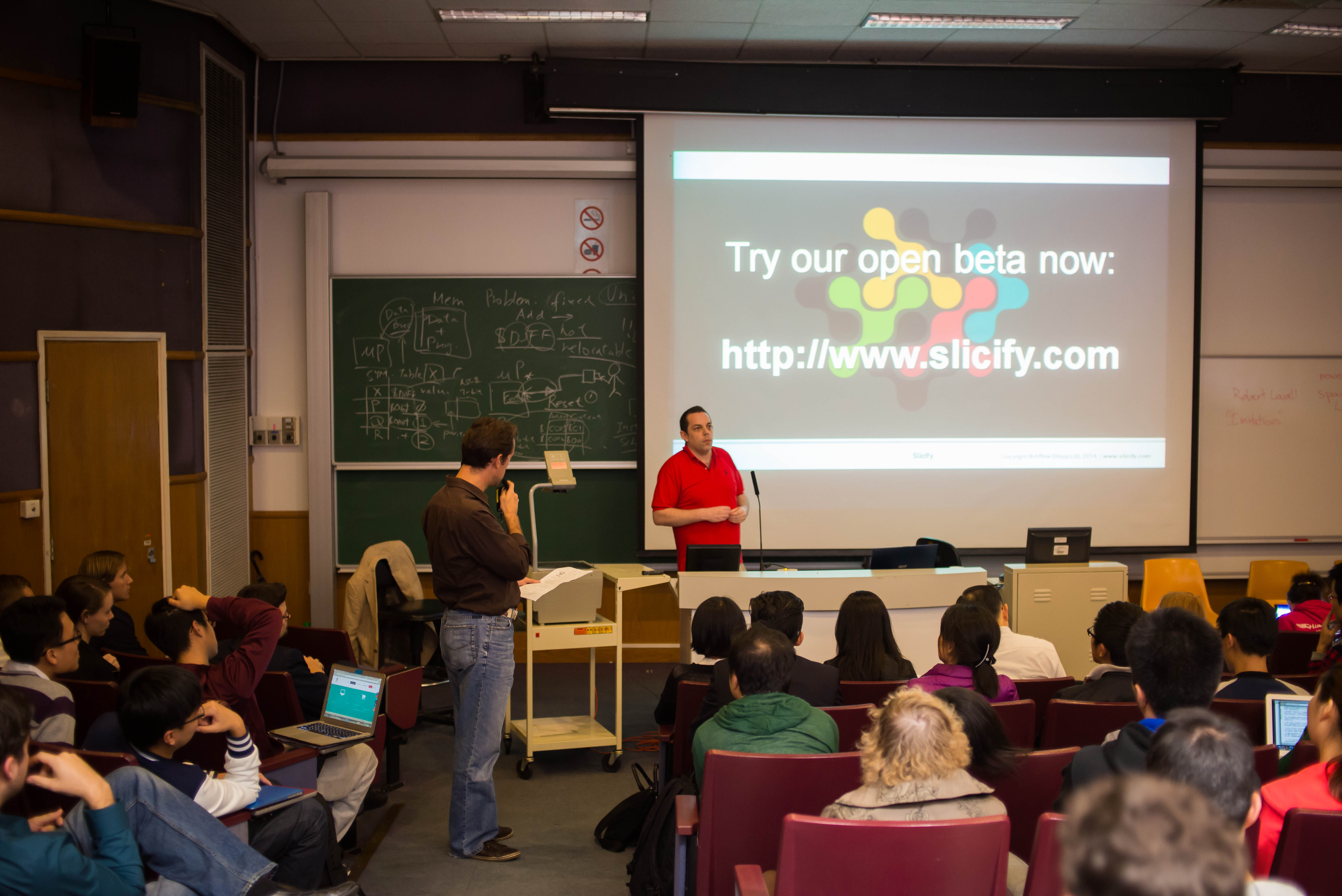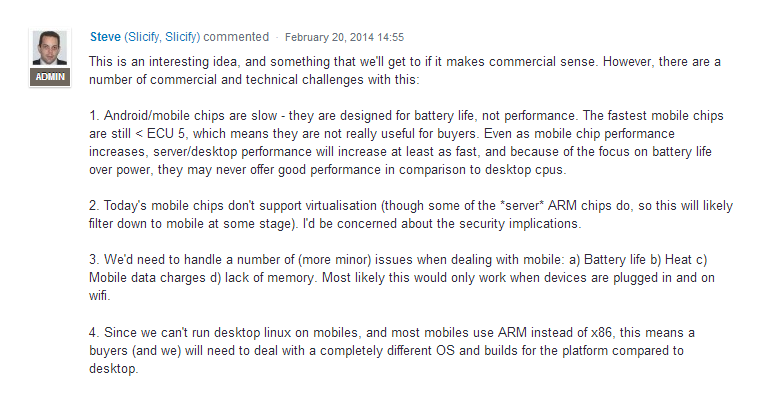by Donald Lam | Photo Credits: Rae Lee, Arjun Bharadwaj | 9 March 2014
The idea is simple. Building a giant, powerful computing network with our PCs that can help run things bigger than us. A Hong Kong startup has a promising future with a new spin of this idea.
Founder and CTO of Slicify, Steve Cook, was on the HKU campus last week for our “The Future of Technology” event. His presentation blew our minds. Watch here.
Intro to Cloud Computing
According to Gartner, cloud computing is the fastest growing sector in IT. It has a $100 billion market now and is expected to double by 2016.
Business cloud computing services are typically provided by firms such as Oracle, Microsoft who have the capital to build the hardware infrastructure needed. Companies purchase their services and use their platform to host and run databases and softwares.
Many of the biggest web services in the world use these cloud computing services.For example, Pinterest, Reddit and Netflix use the Amazon cloud to power their services. Most of the big data analysis, simulations and background calculations behind apps are powered this way.
The First Distributed Computing Project: Berkeley Open Infrastructure for Network Computing
BOINC was developed in 2002 by the smart people of UC Berkeley, at first to crowdsource computing power to analyze data from projects to search for extraterrestrial life. Since then, Researchers around the world have been using the BOINC platform to harness processing power from home computers. Everyone can download a copy of the BOINC software tailored for a specific research project onto their PCs and donate their computing power away for scientific research.
The Hong Kong Startup
By now you should be able to guess the business model of Slicify: buying spare computing power from you and me and connecting them to offer cloud computing services.
If you have an awesome Windows PC with the latest Intel processor and gigabytes of RAM but you really only use it for Google, Facebook, YouTube and the occasional assignment, chances are, you can be using it to earn money just by being online with Slicify.
A product originally from Steve’s home office, Slicify did not get to where it is today without help. Slicify joined the Microsoft Bizspark program, which gave the startup free hosting on Windows Azure servers and free licences of all Microsoft software, Visual Studio, Office and present and past Windows editions.
The Slicify Advantage
The biggest advantage of Slicify for people looking to buy computing power is of course, the low cost. You can imagine how by buying computing power from us, the home PC users can be considerably cheaper than buying from hungry corporate giants.
Slicify is not without competitors. It stands out because of its implementation. Simple yet ingenious, Slicify creates a new virtual Linux sandbox with Virtualbox on your PC as a new task comes in.
If you don’t know what Virtualbox is, hit yourself. It is the popular free, open source software that lets you run any second operating system in a “virtual box” on your operating system.
So all processes from the buyers run in a separate operating system on your host PC, which makes it super secure for the selling users.
But this is even better news for the buyers, instead of having to write new code to use a new API when they start using Slicify. The Slicify platform provides processing power through these thousands of remote Linux virtual machines. With Ubuntu Server being used by almost all SMEs these days, companies do not have to write new code and databases to use or migrate to Slicify. This hassle free characteristic is exactly what Slicify has to distance itself from the competition.
Into the Future
Steve also talked about tapping into the graphics processing power in our GPUs in the future. When asked if there are immediate plans in the event, Steve said that the technology is here, but not that popular.
“The challenge we have at the moment is, the virtualization of GPUs is not really there in the mainstream… I will consider it in the future, the next couple of years.”
Considering how many android devices there are in the world, the potential could be huge. We also had a little chat with Slicify over Twitter on whether they will be having mobile plans anytime soon.
@TecHKUnews My thoughts on #slicify for #android here: http://t.co/zR908fVgWF
— Slicify (@Slicify) 2014 3月 6日
So the challenges there are much bigger, the ARM architecture issue in particular. Slicify will probably have to wait until ARM servers becomes popular. (I don’t see that happening any time soon :P)
For now, how the HTC/BOINC Power To Give experimental app do will give us clues as to how the future will unfold for mobile processing power sharing.





